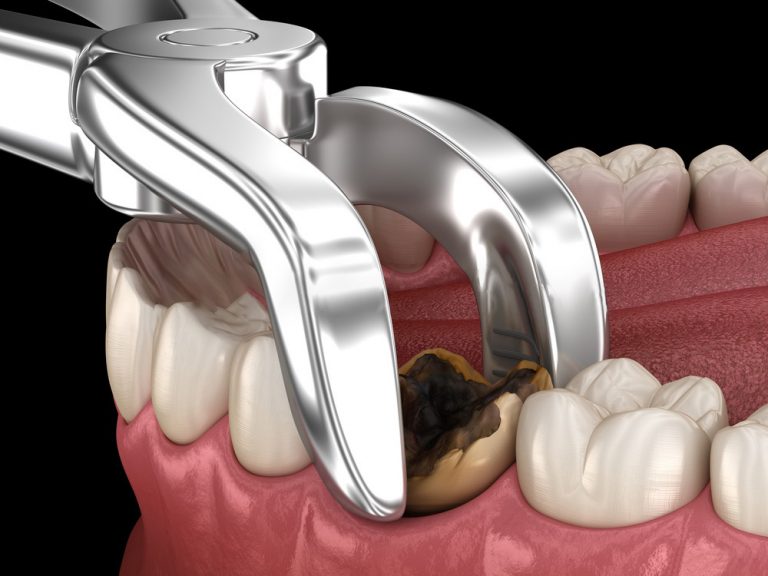If a tooth is badly decayed or damaged due to trauma,
- Periodontal disease
- Prevention of complication of infection may affect the general health of the patient.
- To improve appearance As part of orthodontic treatment
- Teeth with no function
- Vertical cracks in a tooth root
The decision to remove a tooth
Removal of a tooth or teeth is only done after careful consideration .Every effort is made to preserve teeth because they function better than artificial teeth such as dentures, bridges or implants.
X-ray examination
The dentist may take an x-ray film of the tooth and the jaw. The film may help the dentist to plan the best and safest way to remove the tooth.
Anesthesia
Local Anesthesia is usually the preferred option for most patients. General anaesthetic is very rarely required or indicated
The extraction of teeth
The method of extraction will vary depending on the type of tooth and its roots, and its position in the jaw.
Some teeth are relatively easy to remove, while other can be difficult. Difficult extractions are usually due to:
- Adjacent teeth having crowns or large restorations (fillings)
- The tooth being in an abnormal position and affecting neighbouring teeth
- A nerve lying near the tooth to be extracted
- Roots that are large and curved, or that penetrate deeply into the jaw bone
- An unerupted or impacted tooth or a tooth that is fused to the jaw bone (ankylosis).
- In difficult cases involving molars and premolars, the tooth may have to be divided into segments so it can be removed easily and safely.
Possible side effects of extraction
Most patients will not have complications, but if you have concerns, discuss them with your dentist. The following list of possible complications is not comprehensive and there may be others that are not listed.
- Pain
- Bleeding (hemorrhage)
- Dry socket: This occurs if the blood clot that normally forms in the socket is washed away or dissolves, exposing the bone underneath.
- Infection
- Sinus problem
- Numbness or altered sensation
- Damage to a nearby tooth or filling
- Thinning of jaw bone
Tooth extraction in children
The primary (deciduous) teeth, sometimes called baby teeth or milk teeth, are rarely extracted as they are important for the proper eruption of secondary (permanent) teeth.

